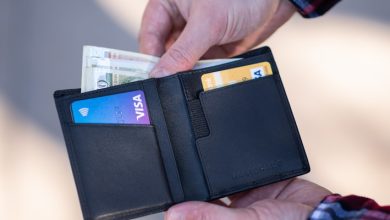The Rise of Multi-Signature Wallets: Enhanced Security for Crypto

- Understanding the concept of multi-signature wallets
- How multi-signature wallets are revolutionizing crypto security
- Exploring the benefits of using multi-signature wallets
- Comparing multi-signature wallets with traditional single-signature wallets
- Tips for setting up and using multi-signature wallets effectively
- The future of digital asset security: the role of multi-signature wallets
Understanding the concept of multi-signature wallets
Multi-signature wallets, also known as multisig wallets, are a type of cryptocurrency wallet that requires more than one signature to authorize a transaction. This added layer of security makes multi-signature wallets an attractive option for those looking to protect their digital assets from unauthorized access or theft.
In a multi-signature wallet, multiple private keys are required to sign off on a transaction before it can be completed. This means that even if one of the private keys is compromised, the transaction cannot go through without the other signatures. This makes it much more difficult for hackers to steal funds from a multi-signature wallet compared to a traditional single-signature wallet.
One of the key benefits of using a multi-signature wallet is the enhanced security it provides. By requiring multiple signatures to authorize a transaction, the risk of unauthorized access or theft is significantly reduced. This can give users peace of mind knowing that their digital assets are better protected from potential security breaches.
Another advantage of multi-signature wallets is the added layer of control they offer. With multiple signatures required, users can set up specific signing rules, such as requiring a certain number of signatures for different types of transactions. This gives users more control over how their funds are accessed and helps prevent unauthorized transactions.
Overall, multi-signature wallets are a powerful tool for enhancing the security and control of digital assets. By requiring multiple signatures to authorize transactions, these wallets provide an extra layer of protection against theft and unauthorized access. For those looking to prioritize security when managing their cryptocurrency holdings, multi-signature wallets are definitely worth considering.
How multi-signature wallets are revolutionizing crypto security
Multi-signature wallets are changing the game when it comes to securing cryptocurrency assets. This innovative technology allows for multiple private keys to be required in order to authorize a transaction, providing an extra layer of protection against unauthorized access. By requiring consensus from multiple parties, multi-signature wallets significantly reduce the risk of a single point of failure compromising the security of the funds.
One of the key advantages of multi-signature wallets is that they can be set up to require signatures from different devices, locations, or individuals. This added flexibility makes it much more difficult for hackers to gain access to the private keys needed to authorize transactions. In addition, multi-signature wallets can also help prevent insider threats, as no single individual has complete control over the funds.
Furthermore, multi-signature wallets are particularly useful for businesses and organizations that require a high level of security for their cryptocurrency holdings. By distributing control of the private keys among multiple parties, companies can ensure that no single individual can abscond with the funds. This not only helps protect against theft or fraud but also adds an additional layer of accountability within the organization.
Overall, multi-signature wallets offer a powerful solution for enhancing the security of cryptocurrency assets. By leveraging the power of multiple private keys and requiring consensus for transactions, these wallets provide a robust defense against unauthorized access and potential security breaches. As the crypto landscape continues to evolve, multi-signature wallets are likely to play an increasingly important role in safeguarding digital assets.
Exploring the benefits of using multi-signature wallets
Using multi-signature wallets can provide a wide range of benefits for cryptocurrency users looking to enhance the security of their digital assets. These wallets require multiple private keys to authorize a transaction, adding an extra layer of protection against unauthorized access or fraudulent activity. By distributing the responsibility across multiple parties, multi-signature wallets reduce the risk of a single point of failure, making it more difficult for hackers to compromise the security of the wallet.
In addition to improved security, multi-signature wallets also offer increased trust and transparency for users. With multiple parties required to sign off on transactions, there is a higher level of accountability and oversight, reducing the potential for internal fraud or misuse of funds. This can be particularly beneficial for businesses or organizations looking to manage their cryptocurrency holdings securely and efficiently.
Furthermore, multi-signature wallets can help prevent accidental loss of funds by requiring multiple authorizations for transactions. This feature can provide peace of mind for users concerned about making a mistake or falling victim to a phishing scam. By requiring confirmation from multiple parties, multi-signature wallets add an extra layer of protection against human error, ensuring that funds remain secure and accessible.
Overall, the benefits of using multi-signature wallets are clear: enhanced security, increased trust, and protection against accidental loss. By leveraging the power of multiple private keys, users can safeguard their cryptocurrency holdings and conduct transactions with confidence. Whether you are an individual investor or a business looking to protect your assets, multi-signature wallets offer a robust solution for securing your digital wealth.
Comparing multi-signature wallets with traditional single-signature wallets
When comparing multi-signature wallets with traditional single-signature wallets, it is important to consider the key differences that can impact the security of your cryptocurrency holdings.
Multi-signature wallets provide an extra layer of security by requiring multiple private keys to authorize transactions. This means that even if one key is compromised, the funds in the wallet remain secure.
In contrast, single-signature wallets only require one private key to access and transfer funds. This leaves them more vulnerable to hacking and theft, as a single point of failure can result in the loss of all funds.
With multi-signature wallets, you can set up different combinations of keys to access your funds, such as requiring two out of three keys for a transaction. This flexibility allows for enhanced security and control over your assets.
Overall, multi-signature wallets offer a higher level of security compared to traditional single-signature wallets, making them an increasingly popular choice for cryptocurrency investors looking to safeguard their digital assets.
Tips for setting up and using multi-signature wallets effectively
When it comes to setting up and using multi-signature wallets, there are a few tips to keep in mind to ensure you are maximizing the security benefits they offer. Here are some best practices to help you effectively manage your multi-signature wallet:
- Choose a reputable multi-signature wallet provider: Selecting a well-known and trusted provider is crucial to the security of your funds. Look for providers that have a proven track record of reliability and transparency.
- Set up multi-factor authentication: Adding an extra layer of security with multi-factor authentication can help prevent unauthorized access to your wallet. Use a combination of something you know (like a password) and something you have (like a mobile device) for added protection.
- Regularly review and update your signing keys: Periodically reviewing and updating your signing keys can help prevent any potential security vulnerabilities. Consider rotating your keys on a regular basis to minimize the risk of unauthorized access.
- Limit the number of signers: While it may be tempting to add more signers for added security, having too many signers can also complicate the signing process and increase the likelihood of errors. Limit the number of signers to a manageable amount to maintain efficiency.
- Keep backups of your keys secure: It’s important to keep backups of your keys in a safe and secure location. Consider using a hardware wallet or a secure cloud storage service to store your backups to prevent loss or theft.
By following these tips and best practices, you can set up and use multi-signature wallets effectively to enhance the security of your cryptocurrency holdings. Remember to stay vigilant and proactive in managing your wallet to protect your funds from potential threats.
The future of digital asset security: the role of multi-signature wallets
As the digital asset landscape continues to evolve, the importance of security in the crypto space cannot be overstated. One of the most promising solutions to enhance security for crypto holders is the use of multi-signature wallets. These wallets require multiple private keys to authorize a transaction, adding an extra layer of protection against unauthorized access.
Multi-signature wallets are becoming increasingly popular among individuals and institutions looking to safeguard their digital assets. By distributing the signing power across multiple parties, the risk of a single point of failure is significantly reduced. This makes it much more difficult for hackers to gain access to funds, providing peace of mind to crypto investors.
Furthermore, multi-signature wallets can be customized to meet the specific needs of different users. For example, some wallets may require two out of three private keys to authorize a transaction, while others may require a higher threshold. This flexibility allows users to tailor their security measures to their individual risk tolerance and preferences.
In addition to enhancing security, multi-signature wallets can also help prevent insider threats within organizations. By requiring multiple parties to sign off on transactions, the likelihood of internal fraud or misuse of funds is greatly reduced. This can be especially beneficial for businesses that handle large amounts of digital assets and want to minimize the risk of internal malfeasance.



